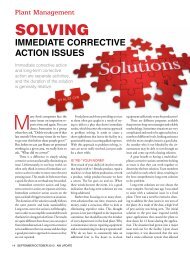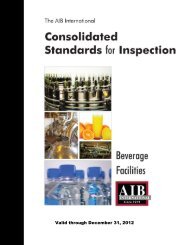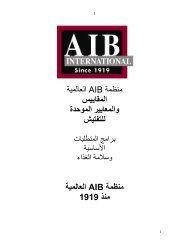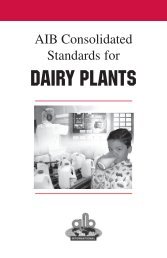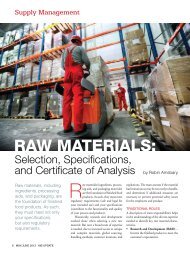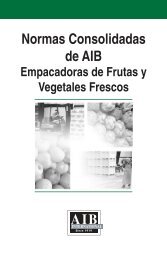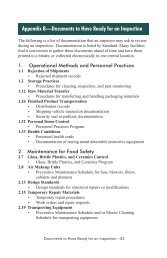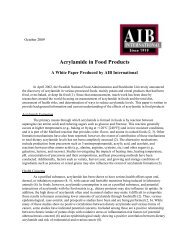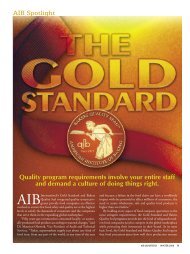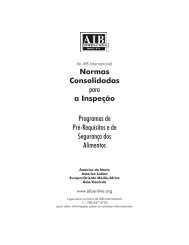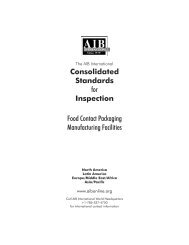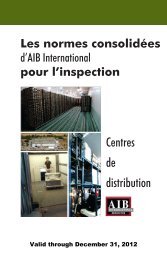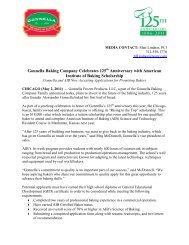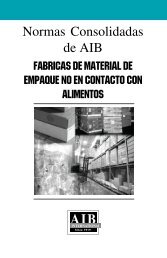FOOD SAFETY AUDIT REPORT By Food Safety Auditor http://www ...
FOOD SAFETY AUDIT REPORT By Food Safety Auditor http://www ...
FOOD SAFETY AUDIT REPORT By Food Safety Auditor http://www ...
Create successful ePaper yourself
Turn your PDF publications into a flip-book with our unique Google optimized e-Paper software.
Maintenance for <strong>Food</strong> <strong>Safety</strong> (cont’d) OK IN S U Comments<br />
161. Adequate lighting was provided in all areas. Lightbulbs,<br />
fixtures, mirrors, skylights, or other glass suspended over<br />
product zones and areas, ingredients, and packaging supplies<br />
were of the safety type. Where this could not be provided, the<br />
glass management system took this into account.<br />
162. Air makeup units were fitted with clean filters and maintained<br />
free of mold and algae. Air return ducts for heating and air<br />
conditioning systems were provided with cleaning and<br />
inspection hatches. Fans, blowers, filters, cabinets, and plenums<br />
were placed on a preventative maintenance schedule.<br />
163. Fans and other air blowing equipment were located, cleaned, and<br />
operated in a manner that did not cause contamination of raw<br />
materials, work in progress, finished foods, food packaging<br />
materials, and food contact surfaces.<br />
164. The physical building was maintained to provide necessary<br />
barriers for effective protection against birds, animals, vermin,<br />
and insects.<br />
165. The maintenance department was responsible for the prevention<br />
of and systematic elimination of leakage and excessive<br />
lubrication. Where drive motors were mounted over product<br />
zones or conveyors cross or run parallel to others at different<br />
levels, catch pans were installed.<br />
166. Segregation of operations was undertaken to the degree<br />
appropriate and reasonable. Such segregation was accomplished<br />
through the use of air curtains, partitions, doors, and/or other<br />
exclusionary systems as appropriate.<br />
167. The plant had design standards to apply to all repairs, changes,<br />
or modifications of the structure to reduce the potential for the<br />
creations of contamination issues.<br />
Equipment:<br />
168. All plant equipment and utensils were designed and of such<br />
workmanship as to be adequately cleanable and were properly<br />
maintained.<br />
169. Temporary materials, such as tape, wire, string, cardboard, and<br />
plastic, were not used for permanent repairs. If these materials<br />
must be used for emergency repairs, they were dated and<br />
replaced with a proper permanent repair as soon as possible.<br />
170. <strong>Food</strong> contact surfaces were corrosion free and nontoxic.<br />
171. Seams on food contact surfaces were smoothly bonded. No spot<br />
or tack welds were observed.<br />
p.21



